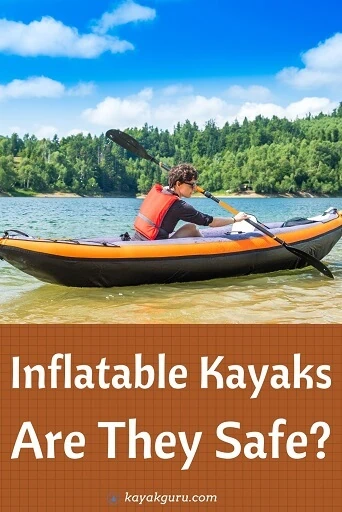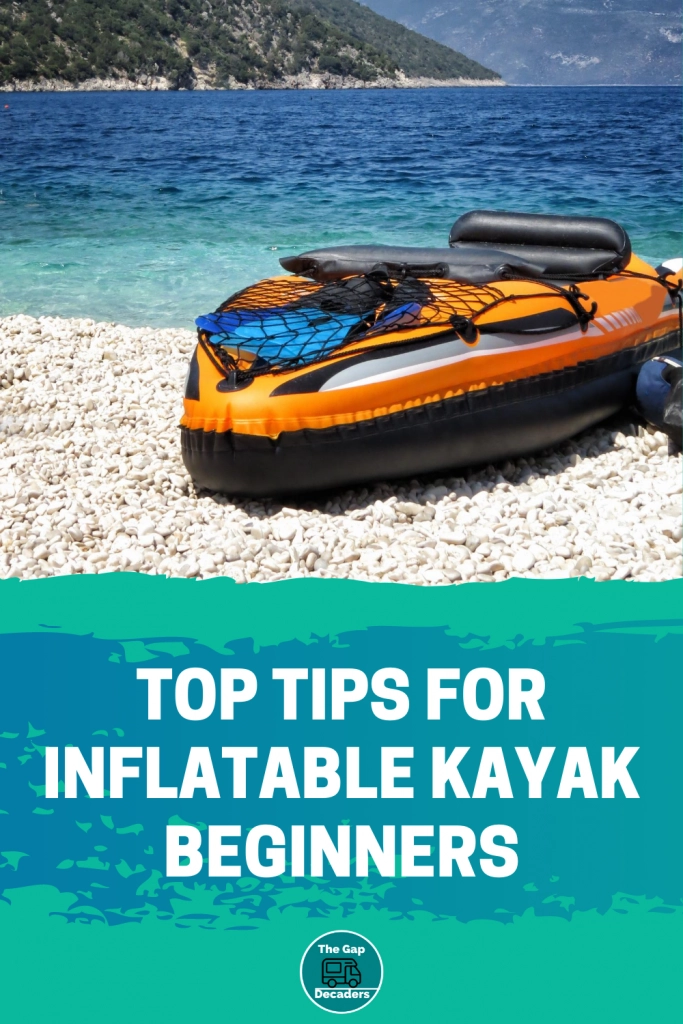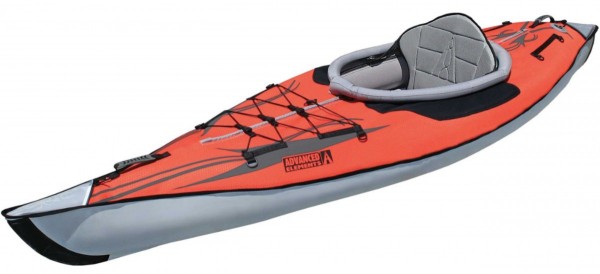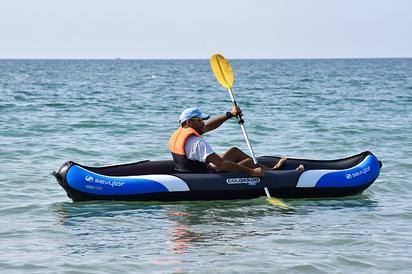
Introduction
Welcome to the world of inflatable kayak safety! Whether you are a beginner or a seasoned paddler, it’s essential to prioritize safety while enjoying the water. Inflatable kayaks offer a portable and convenient way to explore rivers, lakes, and even the ocean. However, it’s crucial to be mindful of certain safety measures to ensure a safe and enjoyable experience.
1. Choose the Right Kayak
Selecting the appropriate inflatable kayak is the first step towards a safe outing. Consider factors like stability, weight capacity, and the type of water you’ll be navigating.
2. Wear a Personal Flotation Device (PFD)
No matter your swimming ability, wearing a PFD is non-negotiable. Make sure it fits properly and is snugly secured.
3. Check the Weather and Water Conditions
Stay informed about the weather forecast and water conditions beforehand. Avoid kayaking in stormy or rough waters.
4. Be Mindful of Your Skill Level
Honest self-assessment of your paddling skills is crucial. Choose the appropriate difficulty level and always paddle within your abilities.
5. Inform a Reliable Person
Before embarking on your kayaking adventure, notify a reliable person about your plans, including your intended start and end times.
6. Familiarize Yourself with Navigation and Safety Rules
Learn and understand the navigation and safety rules specific to the area where you’ll be kayaking. Adhering to these regulations ensures the safety of both yourself and others.
7. Check Your Equipment
Regularly inspect your kayak, paddles, and safety gear for any signs of wear or damage. Replace or repair any faulty equipment before venturing out.
8. Paddle with a Buddy
Whenever possible, paddle with a partner. Having someone by your side not only enhances the fun but also provides an extra layer of safety.
9. Develop Your Rescue Skills
Learn basic rescue techniques, such as self-rescue and buddy rescue. Being prepared for emergencies can help you overcome unexpected situations.
10. Stay Hydrated and Protect Against the Sun
Bring water and stay hydrated throughout your kayaking trip. Additionally, protect yourself from sunburn by wearing sunscreen, a hat, and UV-protective clothing.
So, are you ready to hit the water? By implementing these ten inflatable kayak safety tips, you’ll be well-prepared to fully enjoy your paddling experience while prioritizing your safety and that of others. Have a fantastic time exploring the beauty of nature from the comfort of your inflatable kayak!

1. Choose the Right Inflatable Kayak
When it comes to inflatable kayak safety, your first step is to choose the right kayak for your needs. Consider the type of water you’ll be kayaking in. Are you planning to paddle on calm lakes or do you have a thirst for whitewater adventures? Different kayaks are designed for different water conditions, so make sure you choose one that suits your intended use.
Consider the type of water you’ll be kayaking in
If you’re planning to explore calm lakes or slow-moving rivers, a recreational inflatable kayak may be the perfect choice for you. These kayaks offer stability and ease of use, making them ideal for beginners. However, if you’re an adrenaline junkie looking to tackle rapids, you’ll need a whitewater inflatable kayak specifically designed for the rough waters.
Invest in a durable and high-quality inflatable kayak
Ensure that the inflatable kayak you choose is made from durable materials that can withstand bumps, branches, and rocks. Look for kayaks made from puncture-resistant materials such as PVC or Hypalon. Investing in a high-quality kayak not only ensures your safety but also enhances the longevity of your kayak.
Ensure the kayak has safety features such as grab lines and handles
Another important consideration is the safety features of the kayak. Look for kayaks that have grab lines and handles, as these will make it easier for you to get back into the kayak if you capsize. Grab lines also come in handy for securing your kayak to a dock or another kayak in case of emergencies.
By choosing the right inflatable kayak, investing in durability, and prioritizing safety features, you are setting yourself up for a safe and enjoyable kayaking experience. Remember, safety should always be your top priority when venturing out on the water.
2. Inspect the Kayak Before Each Use
When it comes to inflatable kayak safety, one of the most crucial steps you can take is to thoroughly inspect your kayak before each use. This will ensure that you are aware of any potential issues or hazards that could compromise your safety on the water.
Check for any visible damage or punctures
Before inflating your kayak, carefully examine the entire surface for any visible damage or punctures. Look for tears, abrasions, or cuts that could cause the kayak to deflate while you are paddling. It’s important to address any damage immediately and repair it properly before heading out into the water.
Inspect the valves and ensure they are properly sealed
Take a close look at the valves to ensure they are free from debris and properly sealed. Faulty valves can lead to air leakage, which can significantly impact the stability and performance of your kayak. Make sure all valves are tightly closed and functioning correctly before inflating your kayak.
Test the inflation level and adjust if necessary
Once your kayak is fully inflated, check the recommended inflation level. Use a pressure gauge, if available, to ensure it matches the manufacturer’s guidelines. Adjust the inflation level accordingly by adding or releasing air as needed. Proper inflation will not only enhance your kayak’s performance but also provide optimal buoyancy and stability on the water.
By following these essential inspection tips, you can ensure the safety and longevity of your inflatable kayak. So, before embarking on your next adventure, don’t forget to inspect your kayak for any visible damage or punctures, inspect the valves for proper sealing, and adjust the inflation level as necessary. Stay safe and enjoy your time on the water!

3. Wear a Properly Fitted Personal Flotation Device (PFD)
When it comes to inflatable kayak safety, wearing a properly fitted Personal Flotation Device (PFD) is crucial. Your PFD not only helps you stay afloat but also provides protection in case of an emergency. Here are some tips to ensure you choose and use the right PFD for your kayaking adventures.
Choose a PFD that fits your body size and weight
Selecting a PFD that fits you well is essential for your safety. It should be snug and comfortable, without being too tight or restrictive. Take the time to try on different PFDs and find one that suits your body size and weight. Remember, everyone’s body is unique, so finding the right fit is crucial.
Ensure the PFD is approved by the appropriate regulatory agency
When purchasing a PFD, make sure it is approved by the appropriate regulatory agency in your region. This certification ensures that the PFD meets safety standards and provides adequate buoyancy. Look for labels or markings that indicate the PFD is approved, and avoid using any uncertified or outdated devices.
Wear the PFD at all times while kayaking
Once you have chosen a properly fitting and approved PFD, always wear it while kayaking. This simple practice can make a significant difference in your safety on the water. Accidents can happen unexpectedly, and having your PFD securely fastened is crucial for your personal well-being. Always remember, it’s better to be safe than sorry.
By following these tips, you can ensure that you are equipped with a properly fitted and approved PFD, giving you added peace of mind while enjoying your inflatable kayak adventures. Stay safe and enjoy your time on the water!

4. Learn and Practice Basic Kayaking Techniques
Take a kayaking safety course or receive instruction from a professional
One of the most important steps in ensuring inflatable kayak safety is to learn and practice basic kayaking techniques. Enrolling in a kayaking safety course or receiving instruction from a professional can provide you with the necessary knowledge and skills to navigate the waters safely. These courses often cover essential topics such as how to enter and exit the kayak, proper paddle usage, and how to respond to emergency situations.
Learn how to paddle properly and navigate different water conditions
Knowing how to paddle properly is crucial for maintaining stability and control while kayaking. Learning techniques such as the forward stroke, sweep stroke, and draw stroke will help you maneuver your inflatable kayak effectively. Additionally, understanding how to navigate different water conditions, such as calm lakes or fast-flowing rivers, is essential to ensure your safety. Practice these skills in various environments to gain confidence and enhance your kayaking abilities.
Practice self-rescue techniques
In case of an accidental capsize or other emergencies, it is vital to know how to perform self-rescue techniques. Practice flipping your inflatable kayak back upright and climbing back into it safely. Learning self-rescue techniques will give you the confidence to handle unexpected situations and avoid panic or danger.
By learning and practicing these basic kayaking techniques, you can greatly enhance your inflatable kayak safety. Remember to always prioritize your safety and be well-prepared for any potential challenges that may arise during your kayaking adventures. Stay safe, have fun, and enjoy the beauty of the waters!
5. Be Aware of Weather Conditions
When it comes to inflatable kayak safety, one of the most crucial factors to consider is the weather conditions. Before heading out on your kayaking adventure, always remember to check the weather forecast. This will help you make an informed decision and ensure that you are fully aware of what to expect.
Check the weather forecast before heading out
Before you embark on your kayaking excursion, take the time to check the weather forecast. This will give you an idea of what conditions you may encounter and allow you to plan accordingly. If the forecast predicts strong winds, thunderstorms, or rough waters, it is best to postpone your trip for another day. Safety should always be the top priority, and it is better to be safe than sorry.
Avoid kayaking in strong winds, thunderstorms, or rough waters
If you notice that the weather conditions are not favorable, it is crucial to avoid kayaking in strong winds, thunderstorms, or rough waters. These conditions can be extremely dangerous and increase the risk of capsizing or getting swept away by strong currents. It is always better to wait for the weather to improve before going out on the water.
Be prepared for sudden weather changes
Weather can be unpredictable, and sudden changes can occur even when the forecast seemed favorable. Therefore, it is essential to be prepared for any unexpected weather changes during your kayaking trip. Bring appropriate clothing, such as a waterproof jacket, and be vigilant for any signs of worsening conditions. If the weather starts to deteriorate, head back to shore immediately to ensure your safety.

6. Inform Someone of Your Kayaking Plans
When it comes to inflatable kayak safety, it is important to always inform someone reliable about your planned kayaking trip. Whether you’re heading out on a solo adventure or with a group of friends, sharing your kayaking plans with someone trusted can provide an extra layer of security.
Tell a reliable person about your planned kayaking trip
Choose someone who you can count on to take your safety seriously. Provide them with important details such as the planned route, the estimated return time, and emergency contacts. This way, if anything goes wrong, someone will have a clear idea of where you are and who to contact for help.
Share important details such as the route, estimated return time, and emergency contacts
A thorough conversation about your kayaking plans will help ensure that your safety is never compromised. By sharing the route, you allow the person to have a general idea of where you will be and when. Providing an estimated return time can activate a response protocol if you don’t return as expected. Additionally, sharing emergency contacts ensures that your loved ones can be reached promptly if needed.
Check in with the person when you finish your kayaking adventure
Once you’ve completed your kayaking adventure, remember to check in with the person you informed earlier. Let them know that you’ve returned safely and that everything went according to plan. By doing so, you close the loop and confirm your well-being, offering peace of mind to both yourself and your trusted contact.
Informing someone about your kayaking plans is a simple yet important step in inflatable kayak safety. It not only enhances your overall security but also provides reassurance to those who care about your well-being. So, before you hit the water, make sure to take a moment to inform someone reliable and share the necessary details of your kayaking adventure.
Conclusion
Plan ahead and be prepared
In conclusion, inflatable kayaking can be a thrilling and enjoyable experience, but it’s important to prioritize safety. By following these ten tips, you can significantly reduce the risk of accidents and maximize your fun on the water.
Be mindful of weather conditions
Always check the weather forecast before setting out on your inflatable kayak adventure. Avoid going out on choppy or stormy waters, as strong winds and waves can pose a danger to your safety.
Wear a life jacket at all times
One of the most critical safety measures you can take is wearing a properly fitted life jacket. It can save your life in case of a capsize or unexpected incident.
Secure your gear
Ensure that all your equipment, including personal belongings and paddles, is securely fastened to your kayak. This will prevent items from floating away and potentially causing accidents.
Know your limits and stay within them
It’s vital to understand your own swimming and kayaking abilities and stay within your comfort zone. Avoid attempting advanced maneuvers or going to areas with strong currents that may be beyond your skill level.
Communicate your plans
Always inform someone of your kayaking plans, including your expected return time and the route you’ll be taking. This way, if something goes wrong, help can be sent your way promptly.
By following these tips and practicing caution, you can ensure a safe and enjoyable inflatable kayak adventure. So, get out there, explore the waters, and embrace the thrill of kayaking while prioritizing your safety.








1 Comment